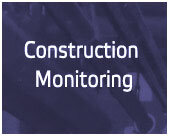The correct sealing of service penetrations is critical but is the most misunderstood area of Fire Protection.
/Service Penetrations
A service penetration that passes through a fire separation is not necessarily correctly sealed just because there is fire sealant used. Almost every building I have inspected has incorrectly sealed and non-compliant service penetrations that pass-through fire separations, yet many of these buildings still hold compliance certificates and BWOFs. “Building Warrant of Fitness”
The importance of fire stopping in life safety is well documented, but unfortunately, not well understood.There are several requirements that must be considered when inspecting, designing or installing sealing systems for services that penetrate a FRR separation. To understand this correctly you first need to understand what the term ‘Fire’ refers to in the New Zealand Building Code
The Determination of FIRE in the Compliance documents for NZBC for fire safety is;
FIRE: The state of combustion during which flammable materials burn producing heat, toxic gases, or smoke or flame or any combination of these.
Therefore, when the industry references “Fire” it is in relation to all the relevant areas determined above.
This is also reinforced in the provisions section of the same document under fire separations, which states that fire separations shall be provided within buildings to avoid the spread of fire and smoke to other firecells.
Also the minimum gap size that requires fire sealing in a fire separation is 0.5mm, which must be sealed with an approved fire sealant that can handle hot smoke, not just a sealant used for gap filling.
Upon additional investigation of the buildings referred to, five issues surrounding the poor state and workmanship of these FRR penetrations developed into common elements.
Lack of knowledge surrounding the correct system for the application. Although this is not ideal it is certainly the least of the concerns.
Approved systems installed outside their scope of application. Sometimes the systems are installed into a different substrate, a larger penetration than tested, or have multiple or different services penetrating than what they have been tested with.
Hybrid or non-approved systems. This is where the installer uses multiple types/brands of products and blends them to make a system. Commonly done by a contractor claiming many years of experience who should know better, and due to the lack of knowledge from inspectors, main contractors and even Fire Engineers around the specific technical details of the “system”, it gets signed off. These hybrid systems may work but have never been tested using these combinations.
Cost cutting by owners, constructors and sub-contractors. This is where they put something cheaper in the penetration to try to satisfy the inspectors.
And by far the worst….. Apathy ! These are the installers who simply don’t care whatsoever. They insert paper, rubbish, polystyrene, gloves or otherwise make a mockery of the system they are installing.
The frightening part is all of the five elements outlined above gain compliance or a BWOF.
Though you make look at this photo and say, “I would never sign that off or install that”, there is a far more subtle issue to understand around the correct sealing of our FRR penetrations. Smoke leakage, or more specifically, COLD SMOKE.
This is the most overlooked and misunderstood area of correct design, inspection or installation of a FRR sealing system. The worst offenders are bundles of cables and cable trays with multiple cables, and if pipes are not sealed for smoke where they enter the penetration, they will also contribute to the movement of toxic smoke.
If you only seal around the outside of a bundle of cables, smoke will move quickly through the gaps between the individual cables.
Some manufacturers claim that their intumescent products will close off the hole in a fire. This may be the case, BUT most intumescent products don’t start expanding until about 180 – 200 Deg C, with most requiring about 400-500 Deg C to generate any form of substantial expansion to close off the opening. So what about the fire at the other end of the room?
This fire will generate copious amounts of toxic smoke that will pass through the incorrectly sealed penetration. This is known as COLD SMOKE, as it is not carrying enough heat to activate the intumescent material.
This may take 5-10 minutes to activate and effectively close around the relevant services
This issue can be likened to a smoke damper in air-conditioning. If the damper is on a fusible link activated by heat, it will let smoke move past the damper until the temperature reaches the heat required to release the damper. If the damper is linked to the smoke alarm, it will mechanically close when the smoke alarm is activated, therefore stopping the smoke immediately. In many cases a collar or pipe wrap has never been designed or tested to be used with cables and as outlined above, if the cables or pipes are not individually sealed they will let the smoke through.
THIS IS A FRIGHTENING STATISTIC
“The volume of smoke and toxic gases that will pass through a single hole the size of a pencil will be enough to overcome a person within 3 minutes and 40 seconds in a room 6m x 3m and they will not be able to see their hand at arm’s length”.
Excerpts taken from; ICC Building Safety Journal Online http://bsj.iccsafe.org/june/features/firestop.html June 18 2010
Ask anyone in the fire service and they will say smoke is our biggest killer. Yet incorrect sealing against cold smoke can turn a 2 hour fire system into a 4 minute fire system!
The correctly sealing of cold smoke will make the difference between having less than 4 minutes to escape a fire and 2 hours
The confusing part of this, that needs to be correctly understood, is that a FRR sealing system can be tested to meet the required AS1530.4 certification, but can still allow smoke through it. This can be both cold and hot smoke, as this AS1530 test does not fail or even report on smoke movement. This makes it very difficult to decide on the correct system to design, inspect or install, as it may have passed the recognised test certification, but fails to meet the smoke sealing requirement in the New Zealand Building Code. AS1530.4 only tests for flame integrity and insulation, which doesn’t cover smoke and toxic gases, as described in the determination of fire.
To correctly seal for smoke each individual service, as a minimum, needs to have fire sealant around each individual cable or service. In many cases this may also need to be applied for the full depth of the penetration.
This photo shows how a multiple cable penetration should be installed. Note the separation between each cable, ensuring a correct and effective smoke seal. It can be done properly when the right approved systems are used and correctly installed.
The other issue missed and often misrepresented by some manufacturers, is the insulation factor around their systems. You may have to dig hard to find this information as in many cases a service passing through a penetration significantly reduces the insulation rating of their system because it may have a rating as a blank seal. For example a blank seal may have a FRR of -/120/120, but when a service is installed its FRR may drop to -/120/30 so therefore it now only has a 30 minute FRR.
When choosing a FRR system for sealing a service penetration I recommend asking the following questions;
What substrate was the system tested in?
How large is the maximum size hole?
How large is the maximum size of the penetrating service and what material was it?
Has it been tested with a service penetrating it at all? Many FRR sealing systems are only designed for gaps and small holes.
What is the maximum amount, size and types of cables allowed and what is the percentage of load capacity of these cables that can fill the hole? Many systems are limited to a small number of services of limited size.
Is there any age/durability testing to ensure the system will last the life if the asset? As most services are hidden in the ceiling space they are difficult to inspect and will not be maintained.
What is the depth required to achieve the relevant FRR?
Are there any special methods of fastening the systems?
What is the insulation rating for specific service penetrations?
Can the system deal with multiple services or a mixture of services?
It is most important to check to see if the installation drawings show fire sealant being installed around the individual cables or services to stop cold smoke.
Most importantly, make sure the installer has robust training and understanding of the systems they are installing. You can have the best products and systems in the world, but if they are not installed correctly they are likely to fail.
Without credible systems being specified in drawings or onto sites, and the demand for trained/certified installers implementing the systems, we will not be able to ensure the correct systems are being installed.
See CID International Ltd.’s certified identification system for comprehensive recording of FRR service penetrations at
The only time we can fully test an installed service penetration seal is in a fire, so it is imperative to get it right.
Frank Wiseman
Fire Group Consulting Ltd










